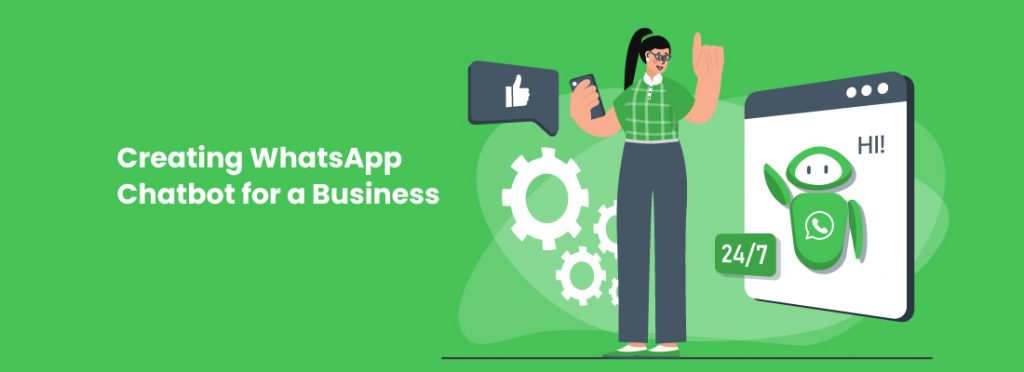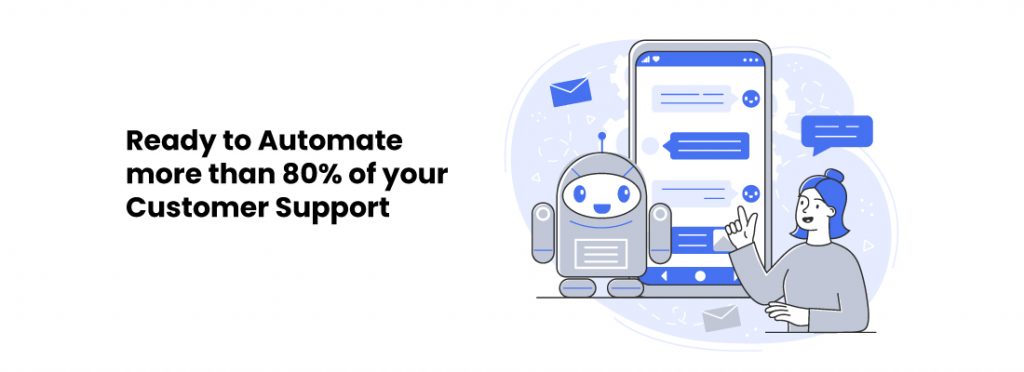WhatsApp chatbots are rapidly becoming a popular tool for businesses to interact with their customers.
With over 2 billion monthly active users, WhatsApp is one of the most popular messaging apps in the world, making it an ideal platform for businesses to connect with their customers.
Creating a WhatsApp chatbot requires some technical expertise, but there are many tools and resources available to help you get started.
In this blog post, we’ll provide an overview of the steps you need to take to create a WhatsApp chatbot, including setting up your account, choosing a chatbot builder, and programming your bot.
By the end of this post, you’ll have a better understanding of how WhatsApp chatbots work and be ready to create your bot to improve customer engagement and automate routine tasks.

What is a WhatsApp chatbot?
A WhatsApp chatbot is a software program that is designed to engage with customers on the WhatsApp platform using either pre-programmed rules or Artificial Intelligence to automate the interaction.
YUGASA BOT utilizes Artificial Intelligence and our own proprietary NLP (Natural Language Processing) engine to enable intelligent interactions with customers on WhatsApp.
These chatbots can be utilized to provide information about your products and services, share content, increase sales, and send notifications relating to orders, payments, and shipping, among other things.
WhatsApp business chatbots operate on the WhatsApp Business API, allowing them to engage intelligently with various types of users, including customers, employees, and students, without requiring any human intervention.
Why create your own WhatsApp chatbot?
Creating your own WhatsApp chatbot is essential for businesses of any size.
Even if you have a small customer base, manually responding to each message can become increasingly difficult as your business grows.
Furthermore, manual responses are often slow, leading to frustrated customers who may not receive the information they need on time.
For businesses involved in eCommerce or retail, slow response times can result in cart abandonment.
Studies show that 53% of online shoppers abandon their carts due to a lack of instant answers.
Therefore, to ensure customer satisfaction and prevent cart abandonment, it is highly recommended that businesses create a WhatsApp chatbot for their operations.

Here are the steps you can follow to create a Yugasabot WhatsApp chatbot in 2023:
Step 1: Building a chatbot
The first step in creating a WhatsApp chatbot involves building the chatbot itself, and you have two options to choose from: coding it from scratch or using a powerful no-code chatbot platform.
Opting for a no-code platform, such as Yugasa Bot, is the more efficient choice, as it allows you to build your chatbot visually without the need for extensive coding expertise.
This approach saves you time and effort while still allowing you to create an effective chatbot that engages with your customers on WhatsApp.
Step 2: Complete the necessary steps to implement chatbots on WhatsApp.
The WhatsApp Business API must first be available to you.
WhatsApp provides access to these APIs via its partners.
You also need to have a Facebook-verified business to gain access to the WhatsApp bot API.
Additionally, a phone number must be registered as your WhatsApp Business phone number.
You must ensure that the number can accept calls from the USA because WhatsApp will call it to verify and activate it for your WhatsApp Business Account.
Step 3: Set up WhatsApp
Fill out the phone number section with your WhatsApp Business number.
Contact our staff, and we’ll assist you to generate your API key in only 2 minutes.
If you’re currently following these instructions to build your chatbot, please quickly fill out this form and we’ll get back to you with information on how to generate the API key.
Step 4: Examine your WhatsApp chatbot
You are now prepared to test your WhatsApp chatbot after entering all of your information.
Now, I’m aware of your thoughts. You are now capable of creating a WhatsApp bot. Your current concern is “Can I integrate my WhatsApp bot into my website?”
Once you’ve finished all the procedures, you’ll have access to the HTML code that you can use to add your website and make a free WhatsApp widget.
You will also receive a WhatsApp QR code and a Click-to-Chat WhatsApp link for distributing it beforehand.
Frequently Asked Questions
What are the requirements for building a WhatsApp chatbot?
To create a chatbot on WhatsApp Messenger, you will need to meet certain prerequisites, including having a verified business account on Facebook, a registered WhatsApp business phone number, and access to the official WhatsApp Business API, which can be obtained with the assistance of Yugasabot.
What do WhatsApp message templates consist of?
You may let your clients know about your marketing initiatives via WhatsApp thanks to the message templates, which will help you increase conversions, income, and the utility of your WhatsApp chatbot.
What does a chatbot for WhatsApp cost?
You must make the most of WhatsApp Marketing, which is booming, to reach out to your customers.
Deploying a chatbot is therefore not free, but we can assist you in doing so at a reasonable cost thanks to our agreements with WhatsApp API providers.
Final thoughts
In conclusion, creating a WhatsApp chatbot can be a valuable investment for businesses of all sizes.
With the growing popularity of WhatsApp as a communication channel, having a chatbot in place can help you engage with your customers more efficiently, answer their questions, and ultimately improve their experience with your brand.
By following the steps outlined in this article, including building your chatbot with a no-code platform like Yugasa Bot, integrating it with the WhatsApp Business API, testing and refining its performance, and launching it to your customers, you can create a chatbot that effectively meets your business needs.
Whether you’re in eCommerce, retail, or any other industry, a WhatsApp chatbot can help you drive sales, reduce customer wait times, and ultimately increase customer satisfaction.







